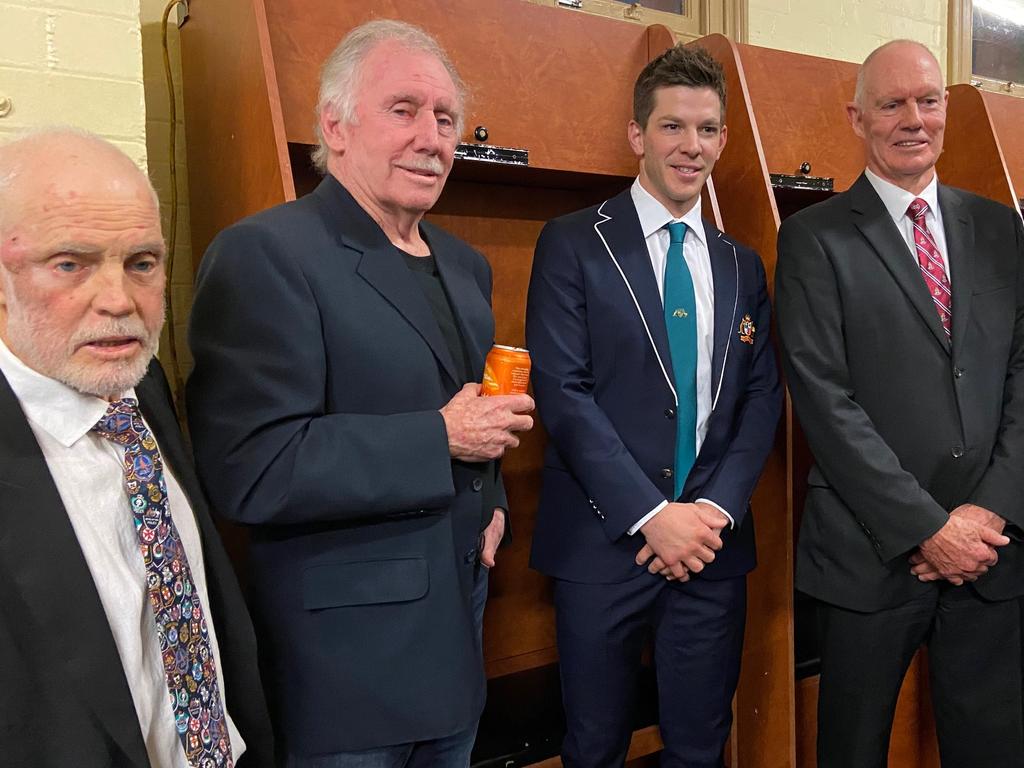The dirt on the shoe of Australian cricket

Steve Smith, Cricket Australia’s investigation concluded, was guilty only of not wanting to know about the conspiracy.
The question that has lingered since is how many really knew? Did cricket take the approach it sanctioned Smith and not want to know any more than it needed to?
Parliament has perfected the art of limiting inquiries lest the truth be revealed, but Cricket Australia says its investigation was “detailed and comprehensive”, adding if more information comes to light they are all ears.
Bancroft’s claim that the bowlers’ knowledge of ball tampering was “self evident” has again ignited an issue Australian cricket did its best to contain and control three years ago.
A hastily convened investigation run by Iain Roy, then senior counsel and integrity officer at Cricket Australia and Pat Howard, then general manager, spoke to those involved in the febrile days after the incident and reached its findings before the next Test began in Johannesburg.
The investigation did not include every player or every staff member. There are some who remain frustrated they were never asked, but will remain hesitant to offer their insights while still playing.
That said, even if its conclusions are a complete set of facts it still wouldn’t satisfy everyone but the facts are not everyone was interviewed.
An 888-page report from the Warren Investigation into the 1963 assassination of JFK consisting of 26 volumes and including the depositions or testimony of 552 witnesses.
To this day few subscribe to its lone gunman, magic bullet theory.
Bancroft is no Lee Harvey Oswald, his bumbling attempt to damage the cricket ball with a piece of paper suggest that if he was given a gun JFK would have lived a longer life and the opener may have endured his years with a bullet hole in his foot.
Nobody was shot in South Africa, in fact there was so little damage to the ball that it wasn’t even changed at the time.
There is an unverified story that one of the officials involved held up two balls at the end of the game and asked which one had led to three players receiving long bans. It wasn’t the one that looked like the dog had chewed it.
Cricket, particularly Australian cricket, set itself up to fail on the ball tampering issue.
Here’s the thing. Almost everyone was up to something. It was rife in Sheffield Shield cricket just as it was rife in international cricket.
England cricketers have used mints and other means for years.
“We found that mints and sun cream had an effect on the saliva, and that helped the ball to reverse,” Monty Panesar wrote in a book published 12 months after the Cape Town incident.
“I might also have ‘accidentally’ caught the ball on the zip of my trouser pocket to rough it up a little.
“That was probably a hairline fracture of the spirit of the game, even if the laws said you were allowed to ‘use your uniform’.”
South African captain in the 2018 series, Faf du Plessis, was caught using a zipper to scratch the ball in 2013 and mints in 2016. He was totally unrepentant on the last occasion.
Waqar Younis was the first to ever miss a game for ball tampering after he was caught using his thumb nail on the ball during a game in 2000.
Cricket figured the crime of ball tampering was so heinous it warranted a one-match ban at most. Hit me with a flower. Since South Africa it has been increased to six Tests or 12 ODIs at most.
There’s a story of a match referee in the Sheffield Shield calling in a state captain during the break and telling him he was changing the ball. When the player complained (it was reversing) he was told it was because it smelled like a jar of peppermints and if he wanted to object he could but it would be put on report.
There’s another that a certain Pakistan player in NSW for the summer introduced the fine art of using a bottle top on the ball while nobody is looking and by the next year it was rife at club and state level.
Some ball managers were said to have had thumbnails so finely manicured they could cut the quarter seam with ease.
There’s grades of infamy in this. Mints are a push, thumb nails a punch and bottle tops a knife, but sandpaper was the equivalent of bringing a gun to the fight.
You know what I reckon? People in that team knew something was going on because it always was, but mostly they were gobsmacked to see Bancroft out there with that square of sandpaper.
You now what else? This ain’t going away for a long time, it is the dog poo on the shoe of Australian cricket.







For many the notion that only David Warner and Cam Bancroft were actively involved in the sandpaper scandal is laughable. Check the comments section of recent articles for more information.